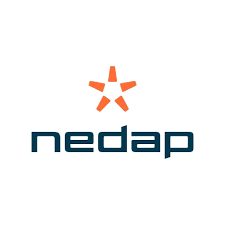

Four ways automated feeding and sorting technology can help lower input costs, reduce feed waste, maximize labor efficiency and improve pig performance.

Managing through the ups, downs and curveballs of the hog market calls for nerves of steel and a keen ability to control costs. While most balance sheets are showing more black ink than red these days, price outlooks and experience indicate it’s wise to get as much as possible from the current market and prepare for turbulence ahead.
Additionally, rising feed and other input costs – and larger industry factors – underscore the need to develop long-term strategies to ensure future profitability. For instance:
- Farrow-to-finish production costs are up at least 30% for many producers relative to last summer.[1]
- Construction costs are up roughly 15% across the board, and materials and labor are in short supply.[2]
- Policy changes ahead will dictate housing and husbandry practices across state lines.
“Current market prices offset increasing input costs, but now is the time to plan for long-term smart solutions. We can’t predict how long broader inflation pressure, higher incomes and consumer preferences will help maintain the current market,” says Holly Hutchinson, Nedap Livestock Management sales executive.
Here are four ways automated feeding and sorting technology can help address the input side of the profit equation.
- Invest in an efficient future
“Automated feeding and sorting technology offer more efficient animal management from farrowing to finishing,” says Hutchinson. “These solutions connect pigs to daily individual management. Farmers can collect real-time data about feed consumption, activity and growth for large groups or individual animals. They can use these data points to drive whole-herd performance improvement.”
For instance, raising finishing pigs in large groups eliminates the cost of pens divided with concrete or plastic partitions and uses every square inch of barns more efficiently. Using technology to feed individuals within the large group allows for rations tailored to meet animal requirements based on body weight.
- Finely tuned stocking and marketing management supports more turns and can result in 11% more pigs each year from the same pen and barn size.[3]
- Research shows automated pig sorting technology increased revenues by $7,000-$10,000 per year per 1,000-head barn.[4]
That’s because farmers can use data to make better management decisions, such as making ration changes, accurately scheduling market pig delivery or providing extra attention to pigs that require management interventions versus having to physically monitor each pen. Management is based on real-time, accurate information, not averages.
- Lower feed waste
Feed accounts for more than half of pork production costs. Automated feeding can help you easily meet the increased nutritional needs of a sow by controlling the frequency and volume of feed thanks to accurate data. This means pig farmers are better able to deliver the ration pigs need when they need it.
Since feed is a large percentage of input costs, it’s good to review your feed management practices often. Evaluating data will show you ways to maximize your return on investment
The payoff is significant. For example, “Farms have been able to reduce feed waste in sow barns up to 20% simply because they are not overfeeding animals,” says Hutchinson.
- Boost labor effectiveness
Automated systems do not eliminate labor needs, but they do allow users to schedule and direct employees more efficiently. Farmers who use automated systems say the technology attracts tech-savvy employees, and the systems allow people to focus on the animals that need extra attention, elevating animal care and job satisfaction. Ready access to accurate, timely data to support quick decisions is one of the favorite features for many farmers and their teams.
Animal sorting is also much easier, less stressful for pigs and people, and more accurate. In the case of finishing barns, farms report being able to load pigs in a matter of minutes per pen instead of hours.
- Better meet industry challenges
Lastly, group housing of different pen sizes combined with automated feeding and sorting technology is the future of the industry, whether you manage small, medium or large groups of animals. Pending policy changes like California’s Proposition 12, which is slated to take effect Jan. 1, 2022, are changing industry housing standards. This legislation outlines standards for breeding pigs, requiring each sow to have at least 24 square feet of usable floor space.
In many current sow facilities, this will result in a loss of 20% of productivity. It’s estimated Prop 12 will cost farms an estimated $1,600–$2,500 per sow to convert facilities to comply. Make sure you get the optimal return on that investment by focusing on feed, labor and animal efficiency while better managing input costs. Are you ready for the future?
“Ultimately, animal management technology can give you the actionable data needed to continuously improve individual pig care and animal performance, handle input and labor costs and take advantage of the input cost savings the systems bring to the farm,” concludes Hutchinson. “Comfortable, well-planned gestation and finishing barns lower stress levels for pigs and people.”


Nedap Livestock Management, nedap-livestockmanagement.com, is the global leader in farming automation using individual animal identification. Nedap’s easy-to-use technology helps farmers manage millions of pigs, dairy and beef cattle 24 hours a day, in more than 100 countries. Nedap empowers managers and personnel with dependable information to make operational and strategic decisions and has for more than 40 years. Nedap focuses on helping livestock farmers become the best farmers in the world. A publicly listed company, Nedap employs more than 750 people globally, across 10 locations and seven business units.




